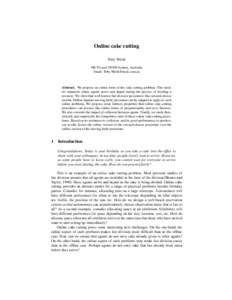<--- Back to Details
| First Page | Document Content | |
|---|---|---|
 Date: 2011-06-27 03:05:09Proportional Envy-free Cake Sociology Entertainment Game theory Fair division Welfare economics |
Add to Reading List |
| First Page | Document Content | |
|---|---|---|
 Date: 2011-06-27 03:05:09Proportional Envy-free Cake Sociology Entertainment Game theory Fair division Welfare economics |
Add to Reading List |